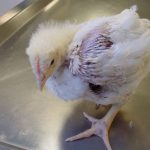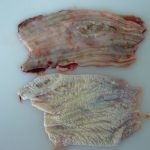Aspergillosis is a respiratory disease caused by parasitism by various fungi of the genus Aspergillus, described since the 19th century. It is of great importance in many poultry species and is described worldwide. The economic impact appears to be the most serious in the turkey sector.
The disease agent and its pathogenicity
The etiological agent is Aspergillus spp. There are many types : the most frequent is by far Aspergillus fumigatus. Aspergillus are saprophytic fungi living in the external environment. They are abundant in wet fodder, rotting grass, mouldy straw, poorly preserved grains and flours. They are common constituents of the surrounding fungal flora.
A. fumigatus is thermophilic (thermal optimum at 38°C) and aerophilic. It is also thermotolerant : it can survive at temperatures ranging from 9°C to 70°C. Aspergillus is spread by the spores of this fungus.
There is little immunity induced by the infection. The evolution of the disease can be divided into primary fungus (inhalation of spores and invasion of healthy tissue) and secondary fungus (proliferation of mycelium on recent lesions or caused by intercurrent disease). The body is sensitized by mycelium and spores, which cause an allergy. Aspergillus toxins degrade the liver and kidneys.
Epidemiological data
- Aspergillosis affects all poultry species, but mainly chicks, wild birds and turkeys. However, palmipeds are increasingly concerned.
- The acute form mainly affects young chicks, turkeys, palmipeds and guinea fowl.
The chronic form mainly affects adult turkeys and causes large losses at the slaughterhouse. - All individuals are in contact with Aspergillus. Favourable causes of contamination and factors of receptivity and sensitivity are necessary for the expression of the disease. Poor ventilation, humidity, dust and poor hygiene are predisposing factors. Chicken is less receptive than turkey, guinea fowl, pheasant and partridge. Anseriforms are less sensitive. Age is important: young people are more receptive and sensitive; contaminated animals over one month will only develop chronic forms with respiratory localization. Individual immune states (pathological, physiological state) can predispose to aspergillosis. Healthy animals are resistant, unless the infectious pressure is high or in the presence of stress
- It is not a contagious disease. It is transmitted by contaminated litter. Infection is by respiratory route by inhalation of Aspergillus spores. Digestive infection is possible in the case of pre-existing lesions of the digestive mucosa. It can also be acquired in the egg by passing spores through the contaminated shell.
Clinical manifestations of the disease
Morbidity and mortality are high in youngs, lower in adults. Animals can heal spontaneously over a long period of time (several weeks).
Symptoms
The acute form, typical, affects young birds a few days old but can occur as early as the first few hours after hatching. Respiratory disorders with dyspnea, tachypnea, cyanosis are observed. Digestive signs, with whitish diarrhea, and often nervous signs (torticollis, lack of balance) can be observed. Birds are showing signs of despondency. Death occurs in 1-2 days and the rate can be high.
- A subacute form in 2-3-week-old birds evolving in 8-10 days results in more attenuated respiratory and digestive signs, with also the possibility of lameness and deformities.
- The chronic form, which is most common in subjects over 1 month of age, has only respiratory signs (dyspnea).
Whitish keratoconjunctivitis (in case of direct infection) or endophthalmitis (in case of systemic infection) may also be observed.
Egg aspergillosis, rare, is detected at candling by brown beaches.
Lesions
Whitish granulomas are observed in the lungs, air sacs, bifurcation of the bronchi. They become umbilical or raised in the long run. Greenish mold (“Roquefort” appearance) then appears if the infection is chronic.
Yellowish areas may be found in the brain, whitish exudates on or in the eye, granulomas in the viscera. Eggs can be contaminated with mold.
Diagnosis
Clinical diagnosis
Based on the observation of respiratory signs in young birds, which may be associated with nervous signs. At necropsy, we notice granulomas and mold.
Laboratory diagnosis
Involves histology, with observation of hyphae and conidiophores. A mycoculture can also be carried out on Sabouraud agar. Serology is not useful.
Differential diagnosis
Other causes of pneumonia and aerosacculitis, vitamin A deficiency, mycobacteriosis, dactylariasis.
Disease prevention and control
Treatment
There is no such thing as a treatment that is really effective and usable in practice. Possible treatments (potassium iodide, specific antibiotics, nystatin, tetracycline sorbate, amphotericin B) are expensive and disappointing. Only the treatment of very high value birds is possible. Nevertheless, enilconazole misting can be effective in aspergillosis due to re-mulching during the batch. The doses are 20 mg/m3. (Speciality with bovine MA). By misting morning and evening for 3 days. This is a therapy outside the MA. There is therefore a flat-rate period of 28 days.
Only preventive measures are therefore possible.
Prevention
Sanitary measures are essential. They are part of general hygiene : good ventilation of the shed, frequent change of bedding, good food preservation, good design of hatcheries. Enilconazole, thiabendazole fumigations can be carried out in empty rooms and on litter in the absence of animals.







